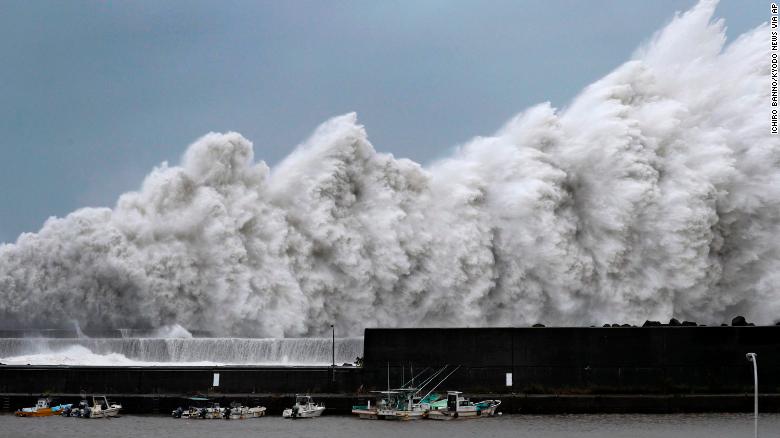Typhoon Jebi leaves trail of destruction in Japan
The strongest typhoon to hit Japan's mainland in 25 years years smashed a tanker into a bridge, forcing one of the country's largest airports to close and hundreds of flight to be canceled.
At least six people have died and 160 people have been injured since the typhoon made landfall Tuesday afternoon, bringing strong winds and lashing rain, according to Japanese public broadcaster NHK.
Police in Shiga told CNN that at least one man died in Higashiomi City after the warehouse he was working in collapsed.
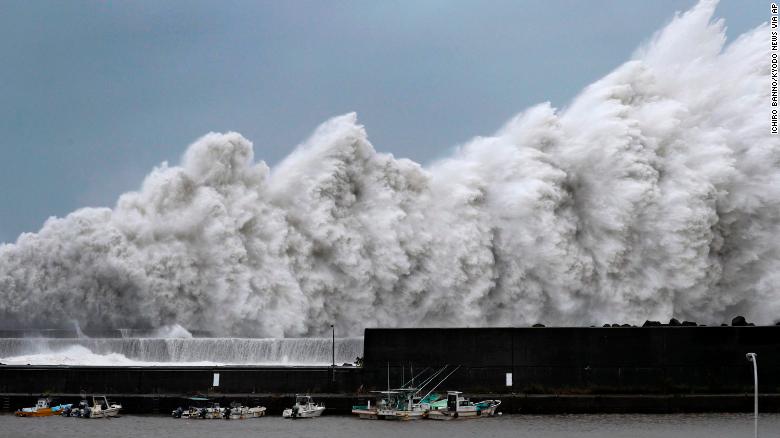
High waves hit breakwaters at a port in Aki, Kochi prefecture, in western Japan.
Typhoon Jebi landed with "very strong" force in Tokushima prefecture Tuesday afternoon, the strongest typhoon to hit the country's mainland since 1993, said Akihiro Kikuchi, from Japan's Meteorological Agency.
Winds lashed buildings and whipped up the sea, yanking an 89-meter-long tanker, the Houunmaru, from its anchorage and ramming it into the bridge connecting Kansai Airport with the mainland.
Images showed the ship's upper decks smashed against bridge, dislodging a portion of the road and forcing authorities to close it to traffic.
Eleven crew members were on board, but no one was injured in the incident, Coast Guard spokesman Keita Sakai said.
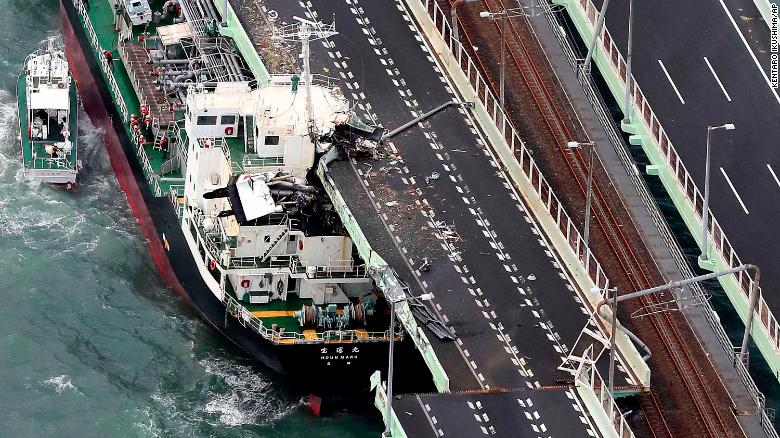
A tanker rests after slamming into the side of an Osaka bridge that connects the airport to the mainland, damaging part of the bridge and the vessel.
The bridge reopened on Wednesday but not before around 3,000 passengers spent a night trapped in the airport. Some were evacuated on buses Wednesday morning to Izumisano Station in Osaka City.
Hundreds of others planned to leave on high speed boats dispatched to Kansai Airport Wednesday to ferry passengers to Kobe Airport to catch alternative flights.
Each boat was capable of carrying 110 passengers, and would go back and forth until all passengers were evacuated, Mami Yamaguchi from the New Kansai International Airport Company told CNN.
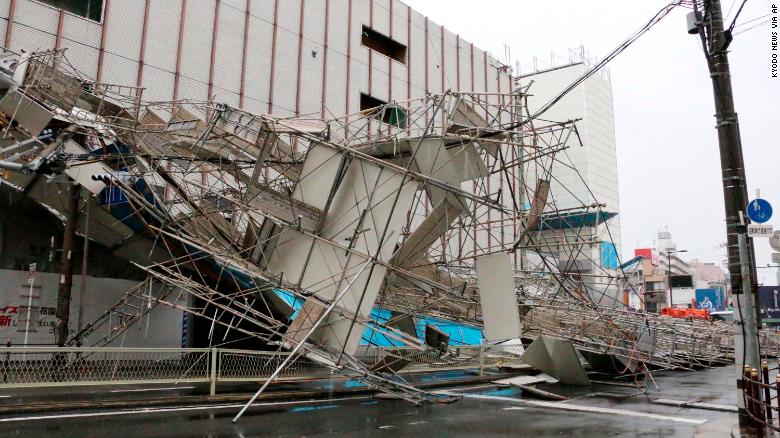
Building scaffolding lays collapsed after a powerful typhoon hit Osaka, in western Japan.
All flights were canceled Wednesday, adding to the traffic chaos caused by hundreds of domestic and international flight cancellations on Tuesday.
"Equipments and machines were damaged by the flooded water in a part of the terminal. We don't know when we can re-open," Yamaguchi said.
Storm surges also swamped runways at Kansai Airport, with water washed in from Osaka Bay. Flight cancellations also affected Itami Airport in Osaka and Chubu Centrair International Airport in Nagoya.
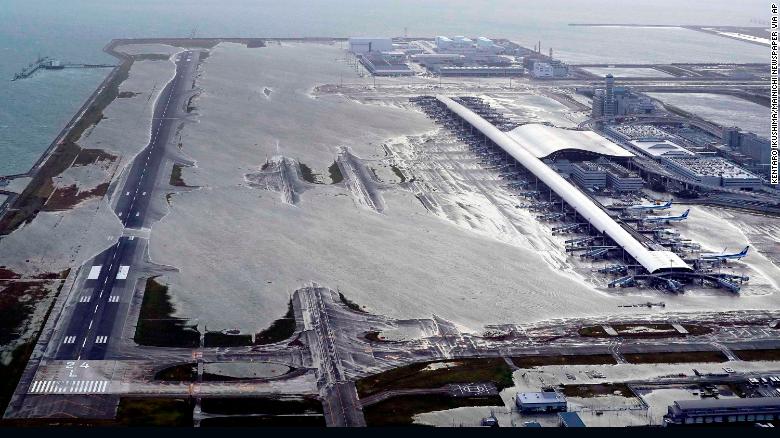
Kansai International Airport is partly inundated following a powerful typhoon in Izumisano, in Japan's Osaka prefecture.
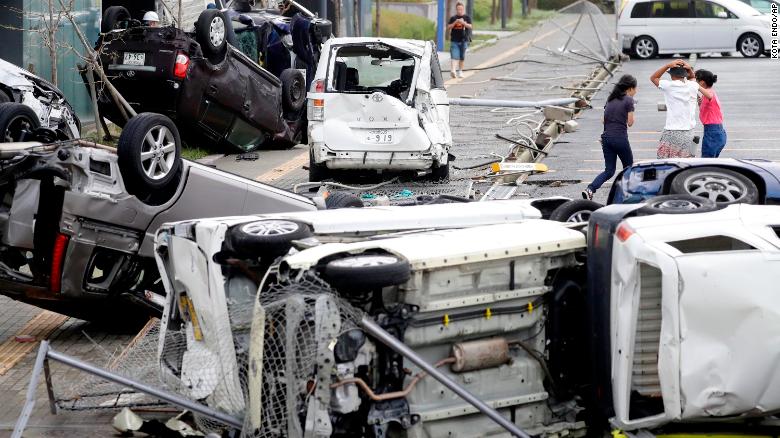
Overturned cars are seen on the street following a powerful typhoon in Osaka, in western Japan.
Social media users posted videos that showed the force of the storm.
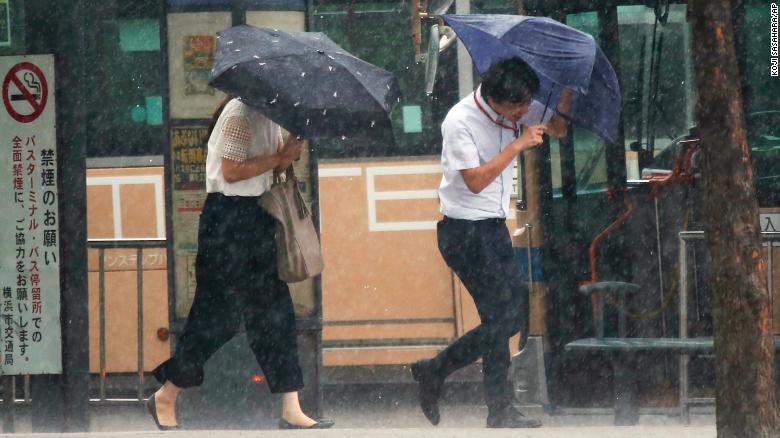
Pedestrians try to hold their umbrellas while struggling with strong winds in Yokohama, near Tokyo.
As the typhoon continued to batter Japan's main island of Honshu, nine cities and towns issued compulsory evacuation orders. A further 53 issued non-compulsory evacuation orders.
Towns and cities in the prefectures of Gifu, Aichi, Kyoto, Osaka, Hyogo, Nara and Wakayama on Honshu, along with Tokushima, Kagawa and Kochi on the island of Shikoku have been affected.
News Courtesy: www.cnn.com

